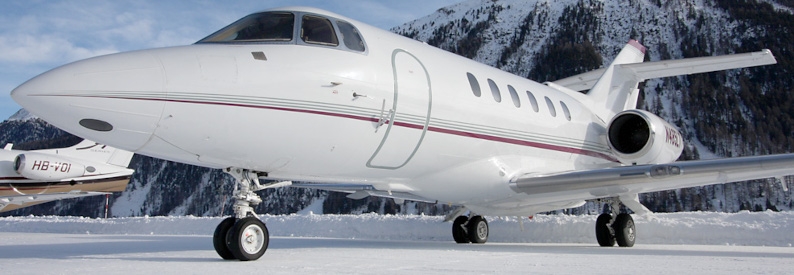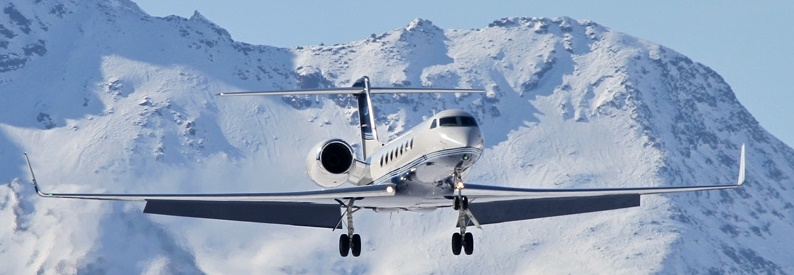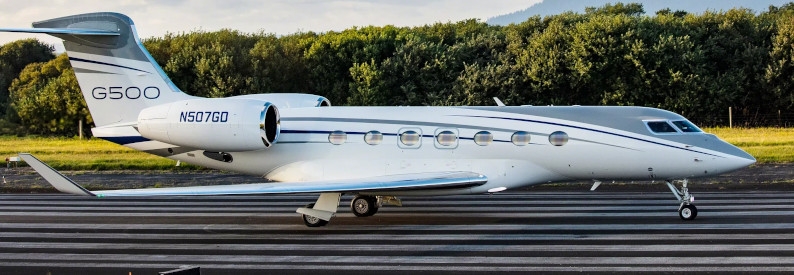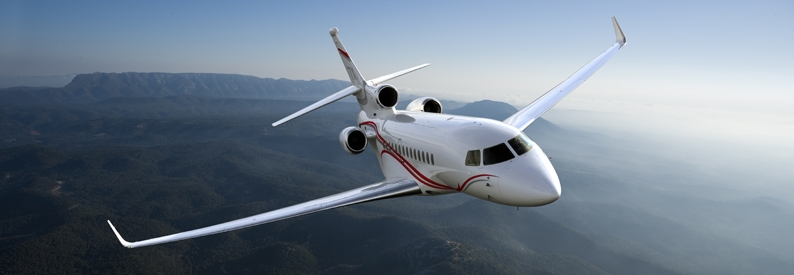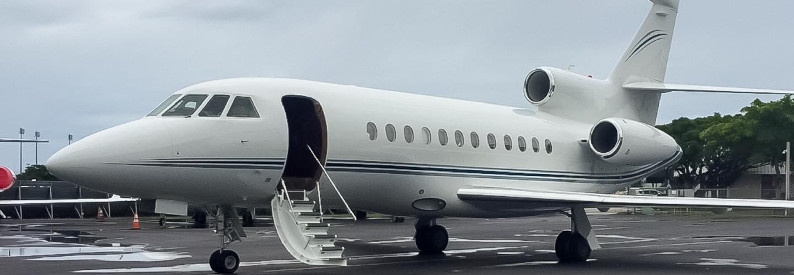NEAJETS (NEW, Farmingdale) has received sole source approval to become a fixed-base operator (FBO) at its Farmingdale (Republic Airport) home base, executive vice president and general manager Peter Montemurro told ch-aviation in an exclusive interview. Maureen Mayer, senior vice president, added: “In addition to the FBO, our next area of growth will be the construction of a fourth hangar,” and NEAJETS is also looking to add several new aircraft to its fleet by the end of the year.
“The company’s design for its fuel farm includes four tanks that will accommodate additional capacity for SAF [Sustainable Aviation Fuel] as it becomes more readily available,” Mayer highlighted.
Montemurro noted that the industry has been experiencing a variety of changes, and NEAJETS’ goal is to continue meeting the evolving needs of the aircraft owners and charter clients it serves.
The company is comprised of three integrated entities that complement each other: Northeastern Aviation Corp. (dba NEAJETS), an aircraft management and charter company; SMC Aviation, a Part 145 FAA-certified repair station; and Northeastern Air Management Corp., the leaseholder of the parcels of land that the companies occupy at Republic Airport in Farmingdale. The airport is owned by the New York State Department of Transportation (NYSDOT).
“NEAJETS is among the top 6.5% of all U.S. Part 135 operators that have earned the ARGUS Platinum rating for safety,” Mayer noted, adding that the company provides services for over 20 aircraft, including 15 Part 135 aircraft. According to FAA data, the 15 aircraft are one Gulfstream Aerospace G300, one G400, one G450, one Legacy 600, one Challenger 650, two G550s, four Hawker 900XPs, one G650, one Global 5000, and two Learjet 60s. Other aircraft are managed under Part 91.
As Montemurro explained, “We work with owners based on their needs, providing a comprehensive range of services, from hangar space and rigorous maintenance services to complete charter management and securing pilots.”
He pointed out that NEAJETS’ primary target is “an aircraft owner who seeks to utilise the plane for their own personal use, while offsetting a portion of their costs through charter.” Most of the company’s aircraft are based in Farmingdale, but there are six planes that are often in Teterboro and one that is often in Florida. “We don't have buildings and complete operations in any other place like we do in Farmingdale, but owners move from different locations, and we support those movements,” he said.
A solid charter market
From the perspective of NEAJETS, the current charter market is strong and growing. As Mayer said, “We did have a somewhat softer third quarter due to some scheduled maintenance events, but we’re already seeing a robust fourth quarter. The pandemic, of course, brought charter to an abrupt halt, followed by an unprecedented surge in activity, but charter for us now is way above pre-pandemic levels.”
NEAJETS started off over 45 years ago as a charter company with owned aircraft, sometimes flying bank documents, commercial aircraft parts, and organ transplant missions in its early years. It now focuses primarily on aircraft management and serving the charter community.
“Charter revenue helps meet the desire of some owners to offset a portion of their costs, and it provides a revenue stream for Northeastern that we can control through our sales efforts, our strong reputation, and the quality of our service,” according to Montemurro.
Charter availability for each aircraft is based on the needs of the owner and varies at NEAJETS from 100% to roughly 60%. In a typical month, an owner at NEAJETS will use the aircraft for around 100-150 hours, with 300-400 hours of charter.
“An aircraft is a travelling office in many ways for our owners and charter customers,” Montemurro said, “so that they can seamlessly move between personal activity and business activity.”
The most popular destinations NEAJETS flies to are in Florida (Miami Opa-Locka, West Palm Beach International, Sarasota/Bradenton, Boca Raton); the Caribbean (Nassau International, St. Maarten, Providenciales, Anguilla, San Juan Luis Muñoz Marin; Bermuda; California (Santa Ana, CA); Colorado (Aspen); Texas (Houston, Dallas, Austin); Atlanta Dekalb-Peachtree; Philadelphia International; Nashville International; Indianapolis International; and Washington Dulles.
Regarding international routes, Mayer said, “Worldwide, so far this year, we’ve flown to Argentina, Belgium, Canada, El Salvador, France, Greece, Ireland, Italy, Mexico, Panama, Spain, Switzerland, and the UK.” She added that while most of the company’s clients are from the New York area, it also has clients nationwide.
Discussing post-pandemic growth, Mayer stressed that Part 135 operations have particularly taken off. “We continue to see charter clients booking much further in advance in order to secure an aircraft. In terms of market trends, many are technology-driven,” she noted. “There’s a major push now for booking apps and platforms to easily connect the retail customer and brokers directly with the operator in live time. We’ve had a number of business meetings recently with companies focused on this technology. It’s still early, but with the investment and consolidation we’re seeing, this emerging trend has a good chance of succeeding. We also see a trend toward further segmentation of the charter marketplace, with ‘by-the-seat charter’, ‘pet-focused’ charters (Bark Air), and one-way versus round-trip charters.”
NEAJETS is satisfied with its Gulfstream operations and sees the aircraft as especially useful in its charter business.
“Our management focus is on heavy mids, heavy, and ultra long-range jets. Over the years, we’ve built notable expertise with Gulfstreams,” Mayer said, adding that several large-cabin aircraft should be joining the fleet in the coming months.
Teterboro’s capacity as a change for Farmingdale
Most of NEAJETS’ aircraft are based at the company’s facilities at Republic Airport; however, several planes are in Teterboro and other airports around the country. As Montemurro noted, “Owners move from different locations, and we support those movements.”
From the perspective of NEAJETS, Republic Airport has a big opportunity to expand as Teterboro, New York City’s most popular business aviation hub, reaches capacity. “Farmingdale is our home base,” Mayer said, “and I really believe we're going to see more transition out east. It's good for the industry, and it's certainly good for us.” She also noted that congestion at Teterboro and White Plains often makes it faster for those from Manhattan to fly out of Farmingdale.
“It’s been said that due to the air and ground congestion at Teterboro, New York JFK, New York La Guardia, and White Plains, you can get from Manhattan to 10,000 feet faster at Republic Airport,” according to Montemurro. Citing additional cost-savings, Mayer said, “fuel, hangar, ramp, and office space pricing are more affordable at Farmingdale, too.”
Addressing the issue of hangarage in general, Mayer noted that Republic Airport is filling up nicely. NEAJETS sells hangar space in three ways. First, there are guaranteed hangar spots (including one entire hangar dedicated to a larger corporate client); second, there is an “as available” option in which an aircraft will be given a hangar spot if one is available; and third, there is a “ramp only” offering.
Once NEAJETS opens its FBO in Farmingdale, it will be fourth on the field, the others being Atlantic Aviation, Modern, and Republic Jet Center. Mayer believes that significant new business will be driven by the FBO, stating: “Our own fleet is using roughly a million gallons a year and poised to grow, so that will help support our FBO, in addition to anticipated transient aircraft.”
Mayer observed that activity has been increasing in business and general aviation recently and stressed that a significant wealth shift has also contributed to demand at Farmingdale. “Areas like Brooklyn, Long Island City, and other parts of Queens are becoming wealthier, and now they can come straight out here. In addition, eVTOLs will be a game-changer for Farmingdale, creating the ability to transport passengers in the tri-state area to Farmingdale even more easily. We’re very bullish on FRG and our companies, now and for the future.”
